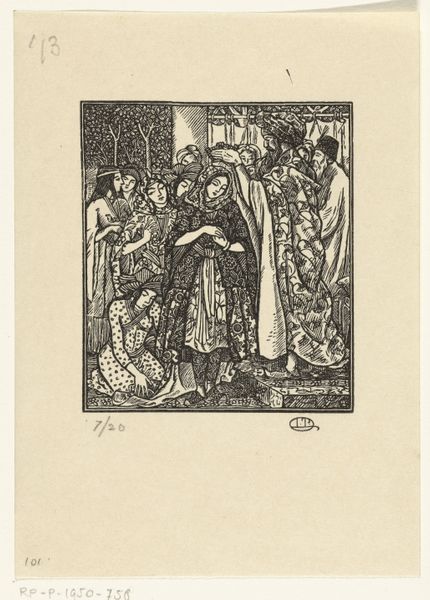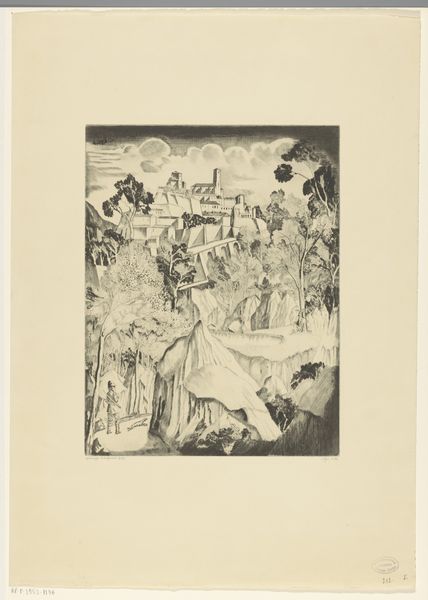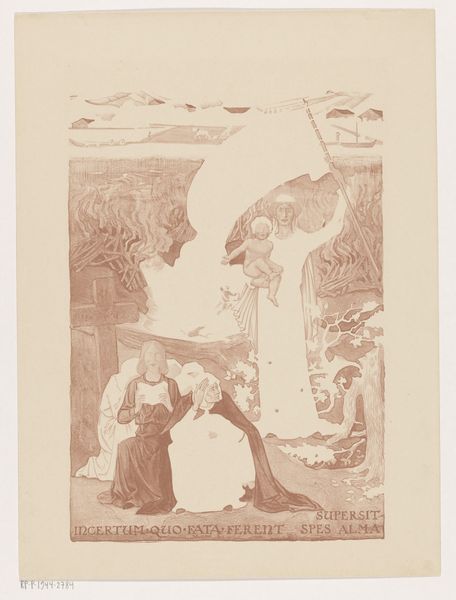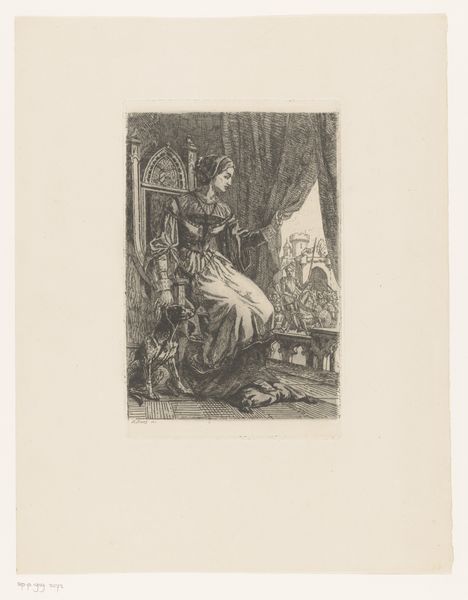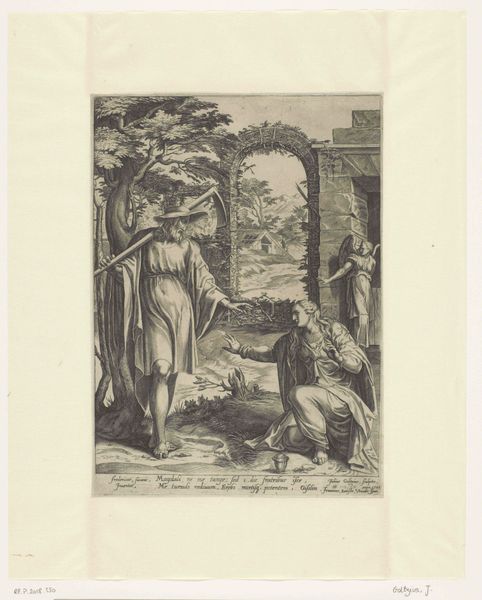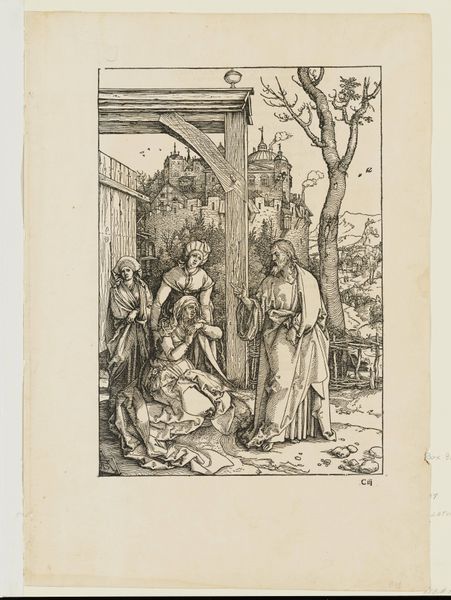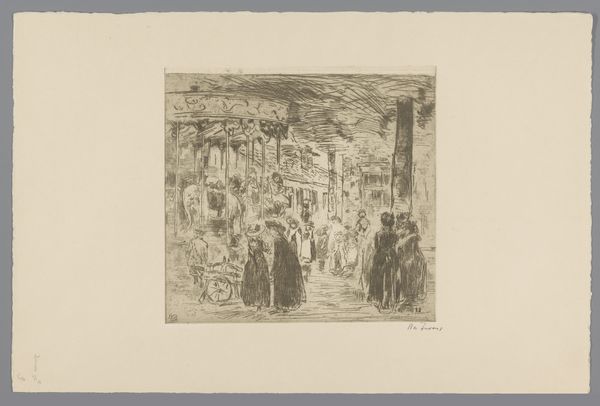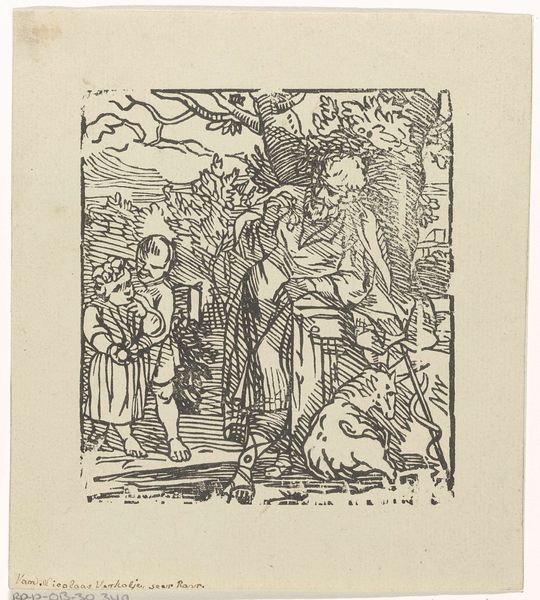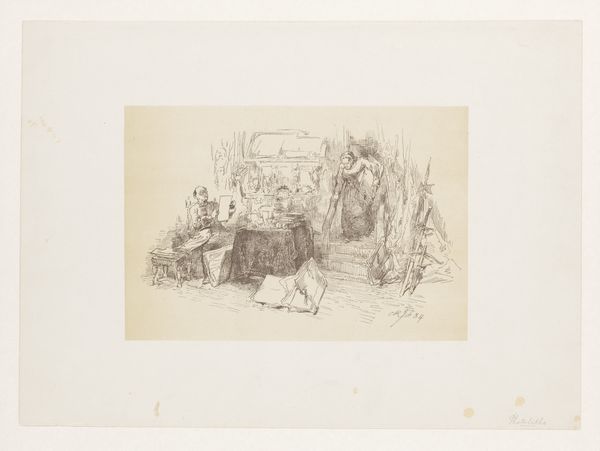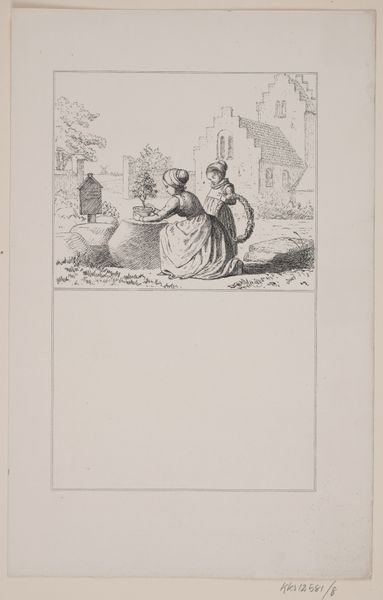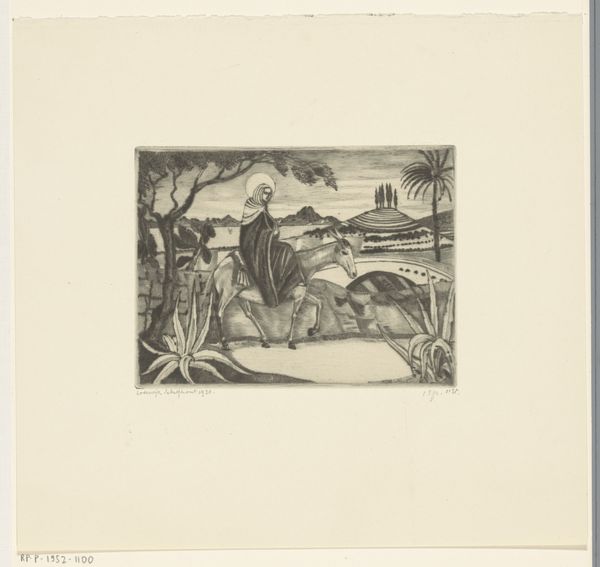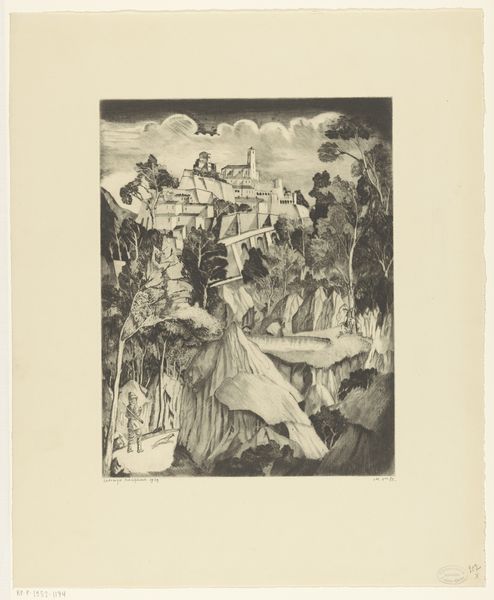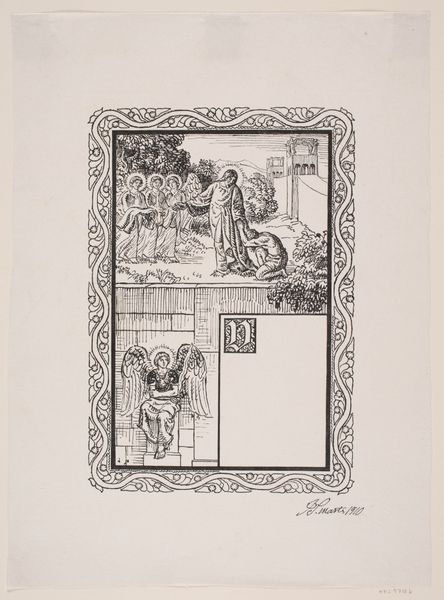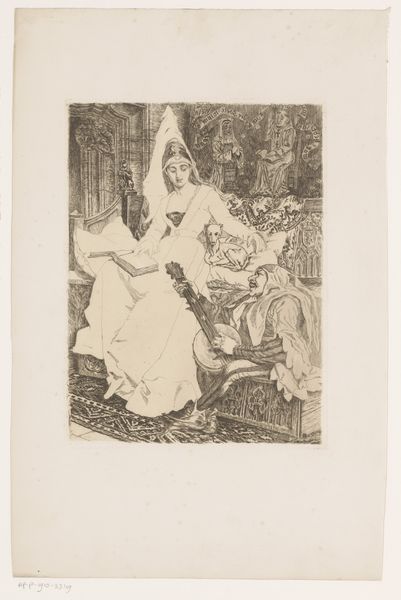
drawing, print, paper, woodcut
#
drawing
#
narrative-art
# print
#
dog
#
figuration
#
paper
#
folk-art
#
geometric
#
woodcut
Dimensions: height 221 mm, width 179 mm
Copyright: Rijks Museum: Open Domain
Curator: Before us, we have "Zittend paar", a print made by Bernard Willem Wierink. Its creation is attributed to around 1937, placing it firmly within a period of immense social and political change. Editor: It’s strikingly graphic. There's a rigidity in the figures—they feel almost like symbols themselves, intentionally posed and flattened, reminiscent of a stage set. Curator: Absolutely. Wierink's engagement with folk art and narrative traditions would have encouraged this stylized depiction, tapping into familiar cultural scripts around family, home and societal order. Notice how the work is a woodcut and rendered on paper; how might these specific mediums have lent themselves to distribution to the masses, reaching far beyond the traditional spaces where art was shown and perceived? Editor: The dog sitting calmly by the couple is also of interest to me, especially paired with the almost-reptilian creature at the woman’s side. It appears as a protective or guardian presence. Does this speak to certain ideas or social roles? Is this creature possibly intended as a symbol? Curator: Precisely! Wierink uses iconography and symbols to subtly comment on social dynamics, and the expectations placed upon certain demographics during the era it was created. We cannot neglect the social turmoil sweeping across Europe at that time. These weren’t casual creative decisions, particularly given the artist’s focus on representation and narrative. Editor: What of the pair? It would be fair to infer they represent stability and tradition, offering viewers some familiarity as social anxieties increase? Is that the child nestling behind them—seeking the kind of reassurance many people may have desired? Curator: It’s a testament to the period's tension that it may portray many conflicting views on marriage and social issues in the period between wars. With "Zittend paar", we're able to peel back layers of meaning woven into a seemingly simple tableau, offering insight to those who encountered the work at the time it was created and for us now. Editor: A powerful, subtle echo from a troubled time; Wierink uses seemingly conventional depictions of families to convey deeper messages.
Comments
No comments
Be the first to comment and join the conversation on the ultimate creative platform.
